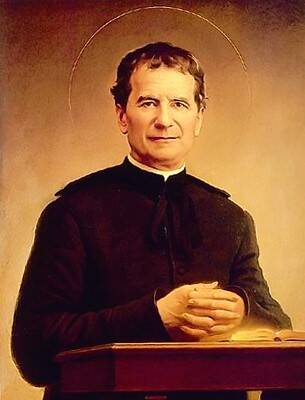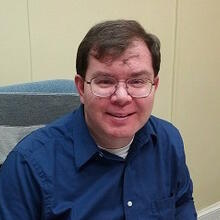Those serene-looking saints we see depicted in those plaster (or wooden) figurines on exquisite pedestals in our churches can be very deceiving. Looking at their calm demeanor on their fine-crafted faces can lull one into thinking that the sainthood process is a rather placid affair: a sudden expression, an outburst of holiness and then sainthood is conferred and declared and a feast day is entered onto the universal church calendar and everybody is happy. It is anything but and if those plaster saints could talk, we would learn the truth that the road to holiness can be a very rocky one indeed, and one that would even make the hardiest soul among us have second thoughts about embarking on such a “career track.” If old age isn’t for sissies (as the saying goes), then the same could be said for sainthood. If an example of this is ever needed, then that of Saint John Bosco—“Don Bosco” as he is popularly known—is a case in point.
Don Bosco is widely venerated today as the “Father and Teacher of Youth” and properly so: he spent his life caring for the poor and disenfranchised youth of his day. He was good at what he did because he himself was a poor, disenfranchised youth. Intellectually, he understood it; emotionally, he lived it; spiritually, he overcame it. He came from farmer’s stock and he knew the poverty and hardship that others experienced. His father, Francesco, had died before he was two, and his mother, Margherita, had to raise him and other two brothers by herself. And like all strong-willed and faith-filled women throughout the ages, she pressed on in her mission to raise her family and in a time of wars and famine, this was not an easy thing to do. In this respect, she proved to be a great example to her youngest son, who, even then, dreamed dreams of the future ahead of him, and those two influences, his mother’s example, and the power of those dreams, prodded him onto his life’s course of helping others.
That path he was to follow on would not to be an easy one, however. In the course of his life, he would encounter great resistance from those who did not see things as he did: while he worked to assist the poor beside him, there were those who only wanted to serve the rich and powerful in the hopes that they, too, would also become like them and accumulate fame, riches and power as well. And the shocking thing about it was that it wasn’t just laymen who grasped for the riches of this world; there were even those among the clergy who felt that they, too, deserved to be treated with the deference, the power, and the riches that were accorded to the kings and princes and rulers of the world. And in such an atmosphere, Don Bosco, whose only goal was to present the Gospel to the youth of his day and who wanted them to be spiritually rich while they might be materially poor, was seen to be a threat to those who were not only attached to the power and the privileges, but felt that such a path seemed to be the only thing worth grasping for. While Don Bosco went about his work, his detractors went about their work to undermine his. In time, he would survive an attempted shooting, bludgeoning, as well as an attempted stabbing.
The order that Don Bosco founded, which eventually became known as the Salesians of Don Bosco, was started out of Don Bosco’s devotion to St. Francis De Sales and grew throughout the years to encompass the entire world. In the early years, his mother and other devoted helpers assisted him in his great task of ministering to the youth struggling from the effects of urbanization and industrialization of the period. And along the way, he promoted a devotion to Mary, Help of Christians, which would be a singular aspect of Salesian spirituality. His work and fame grew, but so did his opposition—even jealous members of the clergy (among them archbishops and cardinals), did what they could to thwart what they saw as a threat to their prerogatives and privileged way of life. There were even politicians who viewed him as a possible rival for political power, thinking that the youth he gathered together for simple catechism instruction was nothing but a breeding ground for sowing revolution in a time when such things were commonplace. That was not the case, of course, but humans, being human, could not be convinced otherwise, even those who were also members of the clergy.
There would opposition to him, even in death, but it would not prevail. When he died in 1888 at the age of 72, he was mourned by those he served and there were calls for his canonization. His work and his holiness had made its mark. The members of the order he founded were afraid for a time that his enemies and detractors would succeed. By 1925, when his cause for canonization was underway, his clerical detractors did what they could to thwart the process. But fortunately for Don Bosco, there was one priest among many who believed in him. That priest was named Achille Ratti, and he never forgot Don Bosco and his great work. And in an instance that shows that God knows His own purposes and moves in His own good time, made sure that Don Bosco’s cause would not be in vain. By the time when Don Bosco’s process to sainthood came to a critical point, the Lord made his purposes clear when he had that priest who had known Don Bosco so long ago positioned so he could stand athwart that opposition and bring that cause to completion. So it was on Easter Sunday, April 1, 1934, that Pope Pius XI—the former Achille Ratti—proclaimed Don Bosco a saint and January 31st became his Feast Day.
There are many stories and legends about Don Bosco, but there are two stories that tug at the emotions, and they involve death: the death of his own mother and his own death. The retelling is not meant to focus on the macabre, for it is not meant to be seen as such. Both instances recall that love was the force of Don Bosco’s life and that that love was so that death could never eradicate it. The story has it that when his own mother lay dying, Don Bosco was so overcome, he could not contain his grief for the woman—his own mother—who had done so much for him and with him in the course of their lives together. So when he entered his mother’s room, his mother took notice of her son, the priest, who was already in mourning. She remonstrated with him and sternly told him to stop crying and leave the room and told him to compose himself—and for good measure, she told her son not to reenter her room until she was already dead! Don Bosco complied: he may have been a priest, but he was also a son, and he obeyed the maternal order. And when his lifetime of service came to an end when he was 72, he was widely mourned by those he selflessly ministered to. They didn’t want to let go of him, even though they knew that they had to. The affection they felt for him was so great, they didn’t want to simply have him lying in state; so many people wanted to see their beloved Don Bosco in a manner they had been accustomed to seeing him in life: with a kindly countenance and his hand raised in blessing. So, before he would be buried—and in a manner we would consider unusual—Don Bosco was presented to the faithful in his priestly vestments, sitting up in a chair, leaning against a table with his hand raised as if in blessing!
This year, 2015, marks the 200th anniversary of the birth of the poor farm boy from Castelnuovo d’Asti who achieved great things despite all the hardships, jealousies and bitter envy he had to endure from others. So, the next time when we enter the quiet of our churches and walk along those bank of candles that light our prayers heavenward, let us pause in awe and gratitude before these “plaster saints” and remember what it took for a lot of them—like Don Bosco—to get there.








